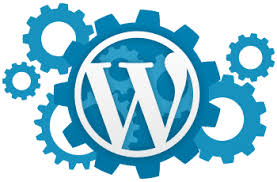Typography is a fundamental aspect of web design, influencing both the aesthetics and functionality of a website. It plays a crucial role in shaping the user experience, communicating messages, and establishing brand identity.
In this article, we’ll explore how typography impacts web Design in Dubai and why it is essential for effective communication online.
Understanding Typography
Typography refers to the style, arrangement, and appearance of text on a web page. It encompasses various elements such as font type, size, line spacing, and letter spacing. Good typography helps ensure that text is readable, engaging, and visually appealing.
Importance of Typography in Web Design
Improve Readability
One of the primary functions of typography is to enhance readability. The choice of font and its size can significantly impact how easily users can read and comprehend text. For example, serif fonts are often used for longer texts due to their readability, while sans-serif fonts are preferred for shorter, more direct content. Proper line spacing and letter spacing also contribute to a smoother reading experience.
Sets the Tone and Mood
Typography can convey different emotions and tones, helping to set the overall mood of a website. For instance, a formal serif font might be used for a corporate website to project professionalism, while a playful sans-serif font might be suitable for a creative portfolio. The font style you choose should align with your website’s purpose and audience.
Aids in Branding
Consistent typography is a key component of branding. Using specific fonts that align with your brand identity helps create a cohesive visual experience. Brands often have custom fonts or unique typography styles that make them recognizable. For example, Google’s use of its custom font, Roboto, reinforces its brand identity across various platforms.
Improves User Experience
Typography affects the overall user experience by making content easier to scan and navigate. Properly sized headers, subheaders, and body text help users find information quickly and efficiently. Clear and consistent typography also helps users understand the hierarchy of information on a page.
Supports Accessibility
Accessible typography ensures that all users, including those with visual impairments, can interact with your website. Using readable fonts, adequate contrast between text and background, and scalable text sizes contribute to a more inclusive design. This is especially important for compliance with web accessibility standards.
Best Practices for Typography in Web Design
Choose the Right Font
Selecting the right font is crucial for effective typography. Consider factors like readability, tone, and brand alignment when choosing a font. Popular font choices for web design include Google Fonts and Adobe Fonts, which offer a wide range of styles.
Maintain Consistency
Consistency in typography helps create a unified and professional look. Use a limited number of fonts and stick to a consistent style for headings, body text, and other elements. This approach prevents visual clutter and enhances the user experience.
Optimize for Mobile
With the increasing use of mobile devices, it’s essential to ensure that typography is optimized for smaller screens. Responsive typography adjusts text size and spacing based on the device, providing a comfortable reading experience across all screen sizes.
Focus on Hierarchy
Typography should clearly define the hierarchy of information. Use different font sizes, weights, and styles to distinguish between headings, subheadings, and body text. This helps users quickly identify and navigate through important content.
Consider Load Times
Web fonts can impact page load times. Opt for web-friendly fonts that load quickly and don’t affect performance. Tools like Font Squirrel and Google Fonts provide optimized fonts for web use.
Examples of Effective Typography in Web Design
-
Minimalist Designs
Minimalist web designs often use clean, simple typography to create a modern and elegant look. For example, the use of a single sans-serif font with ample white space enhances readability and focuses the user’s attention on the content. -
Bold and Playful Designs
Bold and playful typography can add personality and engage users. Websites with creative and unconventional fonts often stand out and leave a lasting impression. However, it’s important to balance creativity with readability to ensure a positive user experience. -
Corporate and Professional Designs
Corporate websites typically use serif fonts to convey professionalism and reliability. Fonts like Times New Roman or Georgia are commonly used for their formal appearance and readability in longer texts.
Conclusion
Typography is more than just a design element; it’s a vital component of effective web design. By carefully choosing fonts, maintaining consistency, and optimizing for various devices, you can enhance readability, support branding, and improve user experience. Whether you’re working on a minimalist site or a bold, creative project, typography plays a key role in shaping how users interact with your content.
For high-quality web design services in Dubai, consider exploring web design in Dubai to see how expert designers like RedSpider Web & Art Design can help you achieve a visually stunning and user-friendly website.



